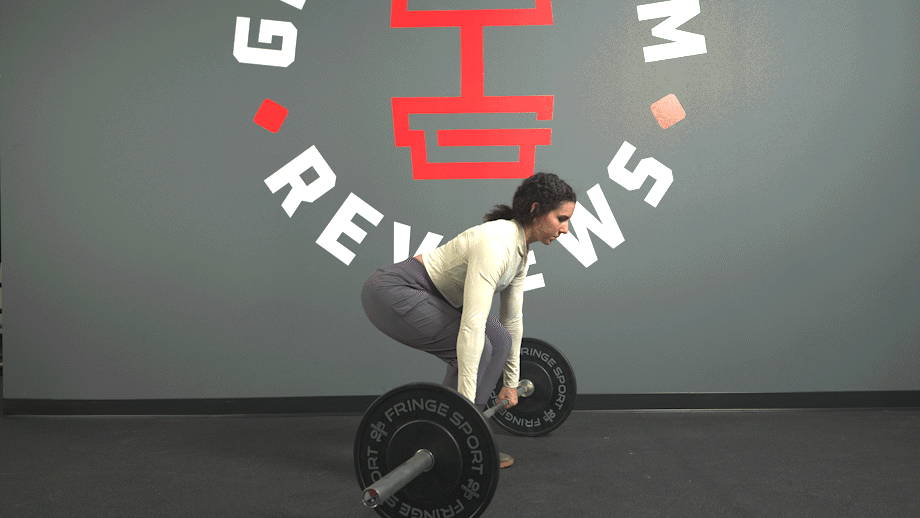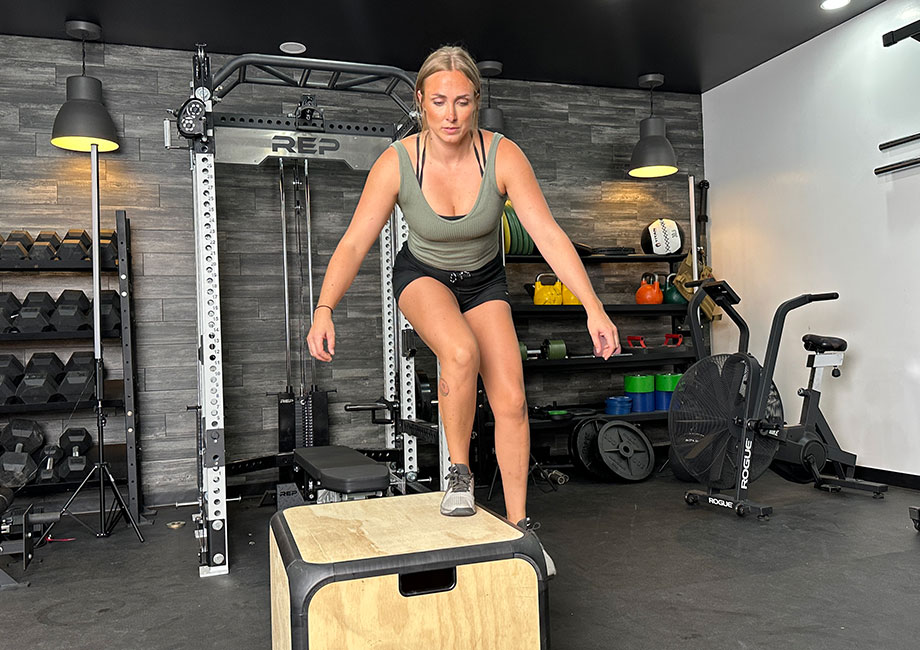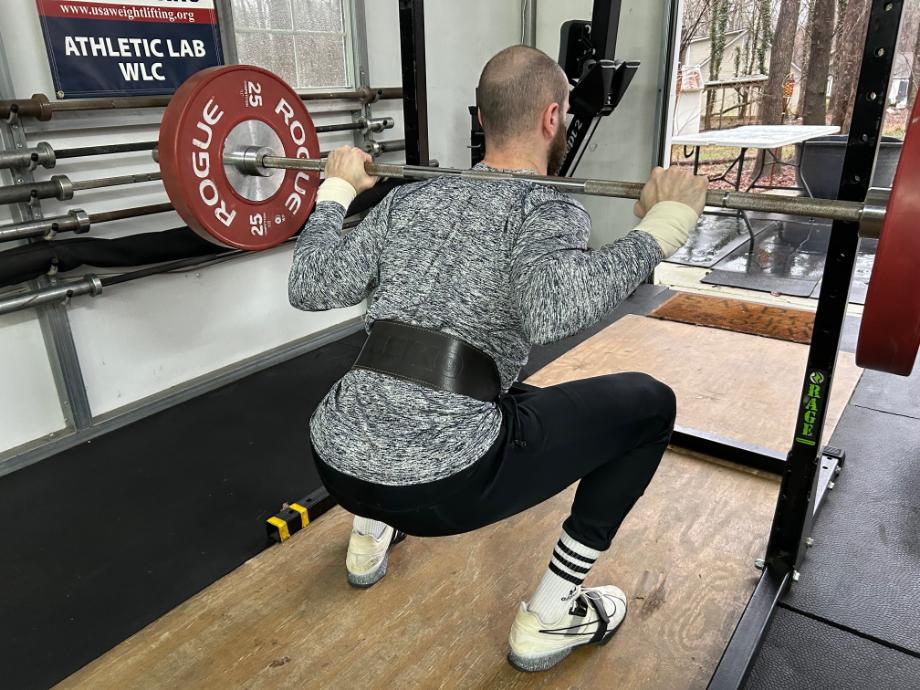As a certified personal trainer (CPT), I get two types of clients: Those who really care about working their glutes and those who don’t. That’s not to say that the latter group isn’t interested in working their leg muscles at all—it’s just that they want to focus on activating the quads, hamstrings, and calves instead.
RELATED: Quad Exercises
The reality, however, is that we could all benefit from stronger gluteal muscles. Everyday activities such as walking and standing from a seated position to strength training exercises such as squats and deadlifts involve your glutes. Regularly training them also may reduce pain in your knees1 and lower back2 and give you those sought-after aesthetic benefits.
Ready to get started? I’ll begin by explaining the anatomy of the glutes. Then, I’ll go through my eight favorite gluteus maximus exercises for you to try. To finish, you’ll see three benefits of working the glute muscles and how to program them into your next lower-body workout routine.
What Is the Gluteus Maximus?
Let’s start with the anatomy of the glutes. The gluteal region is located in the posterior of the pelvis, and the three main muscles are:
- Gluteus maximus
- Gluteus medius
- Gluteus minimus

The gluteus maximus is the largest muscle and most superficial3 posterior muscle and makes up the bulk of the shape and form of the buttock and hip area. It’s a thick, fleshy muscle with a quadrangular shape, and it acts as the chief antigravity muscle during sitting by counteracting and controlling the flexion of the hip.
All three gluteal muscles are collectively responsible for extending and externally rotating the thigh.
8 Best Gluteus Maximus Exercises
Now you know what the gluteus maximus is, here are the eight best gluteus maximus exercises for your next workout. Odds are, you’re probably already doing a lot of these movements.
- Step-up
- Deadlift
- Squat
- Glute bridge
- Hip thrust
- Lunge
- Glute kickback
- Glute ham raise
Step-Up
Why do it: A 2020 systematic review by the Journal of Sports Science and Medicine4 found that the step-up exercise and its variations produced the highest levels of gluteus maximus activation when compared to a range of other exercises. Also, because you’re stepping up with one leg at a time, this exercise may help correct muscular imbalances on either side of your body.
How to do it:
- Stand tall with a flat bench or plyometric box in front of you.
- Place your left foot on the elevated surface so your left knee is bent at a 90-degree angle.
- Transfer some of your body weight to your left side as you lift your right foot off the ground and step onto the surface.
- Pause when you’re upright. Then, step back down with your right leg to the original position.
- Continue for reps before repeating on the opposite side.You can also alternate between your left and right leg for reps.
Expert tip: There are a few ways to progress or regress the step-up. Hold a dumbbell in each hand while performing this movement to make the step-up exercise more challenging. Alternatively, you can lift your back leg into a high knee as you step onto the box to increase the intensity. You can also amend the step-up height if the exercise is too easy or difficult.
RELATED: Best Plyo Boxes

Deadlift
Why do it: Although deadlifts don’t isolate the gluteus maximus in the same way as a glute bridge or a glute kickback, the main benefit is that you’ll be able to lift heavier loads. You’ll want to squeeze your glutes at the top of the movement to make the most out of the exercise.
How to do it:
- Place a barbell on the floor and add the required weight plates.
- Step underneath the bar so it’s covering your shoelaces. You’ll want your feet positioned hip-width apart.
- Push your hips back and take hold of the bar with an overhand grip (palms facing the floor) or a mixed grip. Your hands should be outside of your shins here.
- Brace your core and retract your shoulder blades. Then, drive through your heels to lift the bar, pushing your hips forward as you do so.
- When you’re close to being upright, squeeze your gluteal muscles so you’re locked out. Pause before slowly returning the barbell to the ground.
- Reset, and repeat for repetitions.
Expert tip: Although the steps above describe conventional or standard barbell deadlifts, there are many variations, including: sumo deadlifts, trap-bar deadlifts, Romanian deadlifts, and single-leg deadlifts. You can also vary your equipment by using dumbbells, kettlebells, cables, or resistance bands.
All of these work the glute muscles, but a 2021 study by the International Journal of Exercise Science5 found that single-leg deadlifts may activate the gluteus maximus to a higher degree when compared to traditional deadlifts.

Squat
Why do it: Because squats are a multi-joint exercise, you’ll be able to lift heavier weights than you can with isolation exercises such as hip thrusts or glute kickbacks. Try widening your stance slightly to effectively target your gluteus maximus.
How to do it:
- Adjust the J-hooks on a squat or power rack so the barbell is about shoulder height. Place weight plates on either side.
- Step underneath with your feet flat on the floor, your toes pointing slightly outward, and your hands on either side of the bar. You must decide whether you’ll be doing high-bar or low-bar squats.
- Stand up to unrack the bar. Take a couple of steps back, adjusting your feet if necessary.
- Engage your core, squeeze your glutes, and lower your body until your quads are at least parallel to the floor.
- Hold, then reverse the motion to return to the starting position.
- Keep squatting for reps, then re-rack the bar when you’re finished.
Expert tip: Popular alternatives to back squats include front squats, goblet squats, hack squats, split squats, single-leg squats, and more. A 2021 study by the International Journal of Environmental Research and Public Health6 found that front squats may produce the greatest EMG activity in the gluteus maximus and gluteus medius in the descending phase compared to all other squat variations.

Glute Bridge
Why do it: Unlike squats and deadlifts, bridges isolate your glutes and only require your body weight, meaning they can be done from anywhere. If you don’t have access to equipment but want to hit your gluteus max, glute bridges are a must-have in any training program.
How to do it:
- Lie on the floor, facing the ceiling. Your feet should be flat on the ground, your knees bent, and your arms by your sides.
- Lift your butt off the floor while driving your heels into the ground.
- At the top of the movement, squeeze your glutes and hold. Now, bring your butt back to the ground.
- Repeat for the desired number of reps.
Expert tip: Try single-leg glute bridges if this bodyweight exercise is too easy. Or, loop one of the best resistance bands for glutes around your legs for added resistance. If regular glute bridges are too challenging, reduce your range of motion by not lifting your hips as high.

Hip Thrust
Why do it: A 2019 systematic review7 by the Journal of Sports Science and Medicine found that the muscle excitation sequence during barbell hip thrusts is gluteus maximus, erector spinae, hamstrings, and quadriceps femoris. Even though other muscle groups are worked during the hip thrust exercise, the gluteus maximus is the main one.
How to do it:
- Place a loaded barbell in front of a flat bench. Sit on the floor with your back straight against the bench and your legs extended underneath the bar.
- Roll the bar to your hips. Now, bend your knees so your feet are flat on the floor.
- Keeping your core engaged, push through your heels to thrust your hips into the air.
- Lift the barbell until there’s a straight line between your shoulders and hips. Squeeze your glutes and pause before returning the bar to the ground in a controlled manner.
- Repeat the motion for reps.
Expert tip: For those new to the hip thrust motion, you can practice this glute exercise by placing a dumbbell or kettlebell in your lap instead of using a barbell. You can also use a Smith machine. Try performing single-leg or feet-elevated hip thrusts if you’re up for an extra challenge!

Lunge
Why do it: I love lunges for two reasons. The first is that there are several variations for a range of different abilities, and the second is that most of these variations can be performed with little or no equipment. Aim to get your back knee as close as possible to the floor to feel your glutes working.
How to do it:
- Stand tall with your feet hip-width apart and your toes pointing forward. Your arms should be at your sides or your hands placed on your hips.
- Brace your core. Step forward with your left leg and bring your right knee toward the floor.
- Pause when your left quad is almost parallel to the floor. Drive through your left foot to return to the standing position.
- Repeat, but this time, step forward with your right leg.
- Continue for reps, alternating sides.
Expert tip: Variations of the lunges exercise include reverse lunges, dumbbell lunges, lateral lunges, jumping lunges, assisted lunges, and more. Because of the hip extension involved, these exercises hit the gluteus maximus. However, a 2021 study8 by the International Journal of Exercise Science8 found that dynamic lunge variations elicit greater muscular activation in the gluteus maximus than static lunges.

Glute Kickback
Why do it: Glute kickbacks isolate your glutes, which is why you often see them being performed in the gym. You’ll need to use a lighter weight, but doing so will set your gluteus max on fire. You may also fix muscular imbalances on either side of your body because each leg works independently.
How to do it:
- Set the pulley on one side of a cable machine to its lowest position. Fix an ankle strap attachment and choose your desired weight.
- Loop the attachment around your left ankle, and grab the cable machine with both hands for stability.
- Shift some of your body weight onto your right leg and bend your right knee. With your left leg straight, lift and kick it back toward the ceiling.
- Pause at the top then bring your left leg back down to the starting position.
- Keep going for repetitions before repeating with your right leg.
Expert tip: Some gyms have a dedicated glute kickback machine, so you can try both cable kickbacks and the machine to see which one you prefer. You can also replicate this exercise by using a resistance band—loop one side of the resistance band around a sturdy object and the other around your ankles.

Glute Ham Raise
Why do it: The glute ham raise hits all three gluteal muscles, engaging them isometrically to keep your spine neutral. The GHR exercise is typically done via a GHD machine; if you don’t have access to one, you can still complete the movement by securing your lower legs and using a stability ball to roll your upper body forward and then back up.
How to do it:
- Adjust the GHD machine so that your ankles are secure beneath the leg rollers, feet pressed against the platform, and your quads resting on the middle of the thigh pad.
- Bend your knees at a 90-degree angle, squeeze your glutes, lower your shoulders, lift your chest, and fold your arms.
- Then push your feet into the platform and extend your knees.
- Slowly lower your torso down until you’re horizontal to the floor.
- Lift yourself back to the starting position by driving your feet into the platform and contracting your glutes and hamstrings.
- Reset and repeat.
RELATED: Best Glute Machines

Benefits of Gluteus Maximus Exercises
Before you get started with the best glute exercises above, here are three benefits of working the gluteus maximus muscle:
May Help Reduce Pain
Weak glutes can result in both knee pain1 and chronic low back pain2. Adding a glute workout into your training routine may help mitigate some of this pain as you strengthen your gluteal muscles. If your glutes are underdeveloped, you may even notice a significant reduction in pain after your first session.
May Improve Athletic Performance
You may notice an increase in your lifts or a pain-free run after adding glute max exercises to your routine. Everything from standing up from a seated position to climbing stairs to running, squatting, and deadlifting involves your glutes. Although the glutes muscle group doesn’t get the same attention as the quads or hamstrings, they’re just as important.

Aesthetically-Pleasing
I know strength training isn’t all about aesthetics. But let’s not kid ourselves—part of the reason why we want to work the butt muscles is because strong glutes look good. I didn’t start doing lower-body exercises such as squats and deadlifts for the glutes specifically (it was more for the quads and hamstrings), but I’m not complaining now that I’ve developed my glutes.
How to Program Gluteus Maximus Exercises
Programming gluteus maximus exercises in your training routine depends on your goals. Below are my recommendations:
- To gain strength: Aim for 2-6 sets of 1-5 reps at a heavy weight.
- For muscle growth: Aim for 3-6 sets of 6-12 reps.
- For muscular endurance: Aim for 2-3 sets of 15+ reps.
Our article on how many reps to build muscle has more detail on programming, but I’d suggest taking exercise selection into account here.

For example, performing squats and deadlifts for lower reps allows you to lift heavier loads. When doing exercises that isolate the gluteus max—think glute bridges and glute kickbacks—perform higher reps at lower weights. You’ll also want to do the multi-joint exercises (aka compound lifts) first.
Gluteus Maximus Exercises: Final Thoughts
Strengthening the gluteus maximus has several benefits, including reduced knee and back pain, improved athletic performance, and aesthetics. As for programming, consider your goals and choose the relevant sets and repetitions based on those goals.
- Try different variations. Squats, deadlifts, and lunges have many variations. You may find that an alternative hits your gluteus maximus to a greater extent. Don’t be afraid to experiment.
- Include both compound and isolation exercises. Compound exercises are fantastic, but they don’t isolate the gluteus maximus. Isolation exercises don’t usually allow you to lift heavy loads. Ideally, you want a combination of the two in your workout routine.
- Remember to rest. Like every other muscle group, the glutes need a rest. Train them and then allow them to recover before training them again. This can help prevent unnecessary injuries.
Gluteus Maximus Exercises: FAQs
What is the best exercise for your gluteus maximus?
To work your gluteus maximus, my favorite exercises are the following:
-Step-Up
-Deadlift
-Squat
-Glute bridge
-Hip thrust
-Lunges
-Glute kickback
-Glute ham raise
In terms of the best exercise for your gluteus maximus, it depends on the individual. Some prefer doing compound exercises such as squats and deadlifts, whereas others prefer isolating the glutes with glute bridges and kickbacks. Try them all to see which you enjoy.
How do I activate my gluteus maximus?
To activate your gluteus maximus, try exercises such as squats, deadlifts, glute kickbacks, hip thrusts, lunges, step-ups, and glute bridges. Most of these exercises have several variations, too.
For example, with deadlifts, you can do traditional deadlifts, Romanian deadlifts, single-leg deadlifts, sumo deadlifts, trap-bar deadlifts, and more. Once you try them out, you’ll likely find one or two variations that work well for glute activation.
Does walking strengthen gluteus maximus?
If you don’t walk much currently, you’ll probably find that walking does strengthen your gluteus maximus to an extent. Increasing the intensity of your walks—perhaps by adding an incline—can also help.
To truly strengthen your gluteus maximus, you’ll need to add resistance training. You can continue walking, but introducing glute exercises at home or in the gym will only help to strengthen your glutes.
How do older people strengthen gluteus maximus?
There are several ways that older people can strengthen their gluteus maximus. Bodyweight exercises such as squats, lunges, step-ups, glute kickbacks, hip thrusts, and glute bridges hit the glute max. If these are too difficult, hold onto a chair, wall, or another sturdy object while performing them. Alternatively, bands are a safe and versatile way to add resistance without needing free weights such as dumbbells or barbells.
RELATED: Best Resistance Bands
References
- Barton CJ, Lack S, Malliaras P, Morrissey D. Gluteal muscle activity and patellofemoral pain syndrome: a systematic review. Br J Sports Med. 2013 Mar;47(4):207-14. doi: 10.1136/bjsports-2012-090953. Epub 2012 Sep 3. PMID: 22945929.
- Jeong UC, Sim JH, Kim CY, Hwang-Bo G, Nam CW. The effects of gluteus muscle strengthening exercise and lumbar stabilization exercise on lumbar muscle strength and balance in chronic low back pain patients. J Phys Ther Sci. 2015 Dec;27(12):3813-6. doi: 10.1589/jpts.27.3813. Epub 2015 Dec 28. PMID: 26834359; PMCID: PMC4713798.
- Elzanie A, Borger J. Anatomy, Bony Pelvis and Lower Limb, Gluteus Maximus Muscle. [Updated 2023 Apr 1]. In: StatPearls [Internet]. Treasure Island (FL): StatPearls Publishing; 2024 Jan-. Available from: https://www.ncbi.nlm.nih.gov/books/NBK538193/
- Neto WK, Soares EG, Vieira TL, Aguiar R, Chola TA, Sampaio VL, Gama EF. Gluteus Maximus Activation during Common Strength and Hypertrophy Exercises: A Systematic Review. J Sports Sci Med. 2020 Feb 24;19(1):195-203. PMID: 32132843; PMCID: PMC7039033.
- Diamant W, Geisler S, Havers T, Knicker A. Comparison of EMG Activity between Single-Leg Deadlift and Conventional Bilateral Deadlift in Trained Amateur Athletes – An Empirical Analysis. Int J Exerc Sci. 2021 Apr 1;14(1):187-201. PMID: 34055137; PMCID: PMC8136577.
- Coratella G, Tornatore G, Caccavale F, Longo S, Esposito F, Cè E. The Activation of Gluteal, Thigh, and Lower Back Muscles in Different Squat Variations Performed by Competitive Bodybuilders: Implications for Resistance Training. Int J Environ Res Public Health. 2021 Jan 18;18(2):772. doi: 10.3390/ijerph18020772. PMID: 33477561; PMCID: PMC7831128.
- Neto WK, Vieira TL, Gama EF. Barbell Hip Thrust, Muscular Activation and Performance: A Systematic Review. J Sports Sci Med. 2019 Jun 1;18(2):198-206. PMID: 31191088; PMCID: PMC6544005.
- Bezerra ES, Diefenthaeler F, Nunes JP, Sakugawa RL, Heberle I, Moura BM, Moro ARP, Marcolin G, Paoli A. Influence of Trunk Position during Three Lunge Exercises on Muscular Activation in Trained Women. Int J Exerc Sci. 2021 Apr 1;14(1):202-210. PMID: 34055138; PMCID: PMC8136561.






